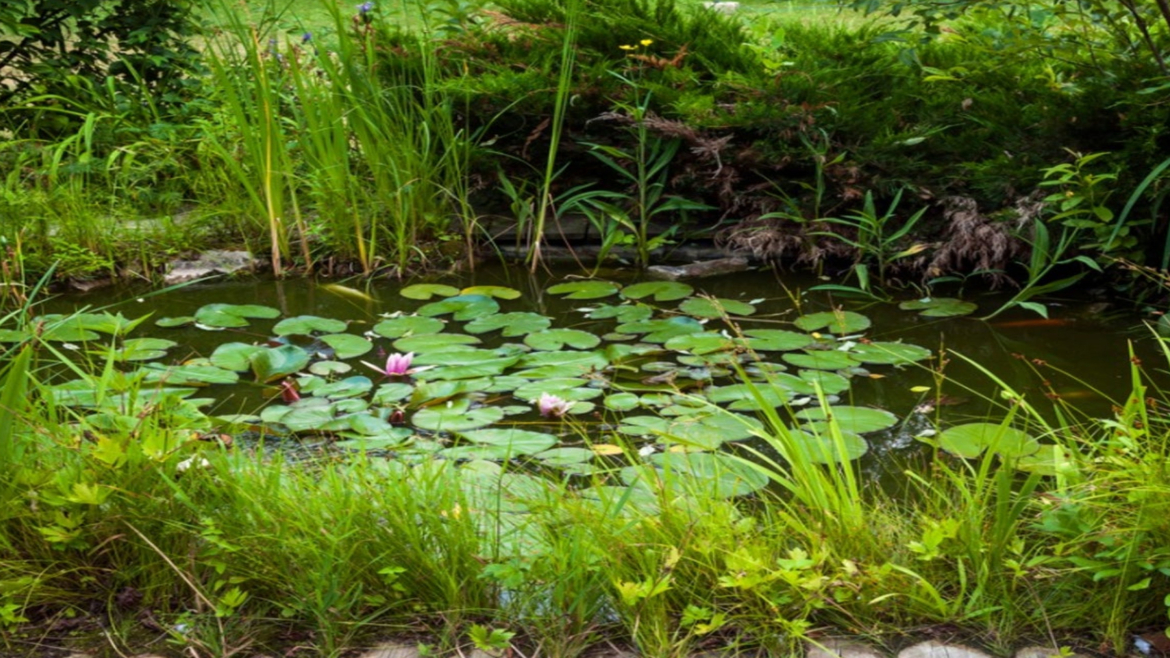Adding plants to the pond is essential for keeping it healthy and balanced. It helps ensure that everything in the pond stays in good shape. Of all the plants that can live in a pond, oxygenating pond plants, also called pond oxygenators, are the best choice.
These fantastic pond oxygenator plants add more oxygen to the garden pond, which is essential for keeping fish and other water animals healthy.
Oxygenating pond plants not only serve to give water oxygen but do more than that. They are like a shelter for many creatures, including the animals living in ponds. The water plants create small habitats for fish, amphibians, and many other animals that live in the water and find food.
Furthermore, the oxygenators beautify the pond and benefit the environment by enhancing its oxygen level and attractiveness.
In general, oxygenating plants give off oxygen, increase the oxygen in the pond, and thus provide a healthy atmosphere for the plants and the animals that live there. It’s just about keeping the pond in a state of equilibrium.
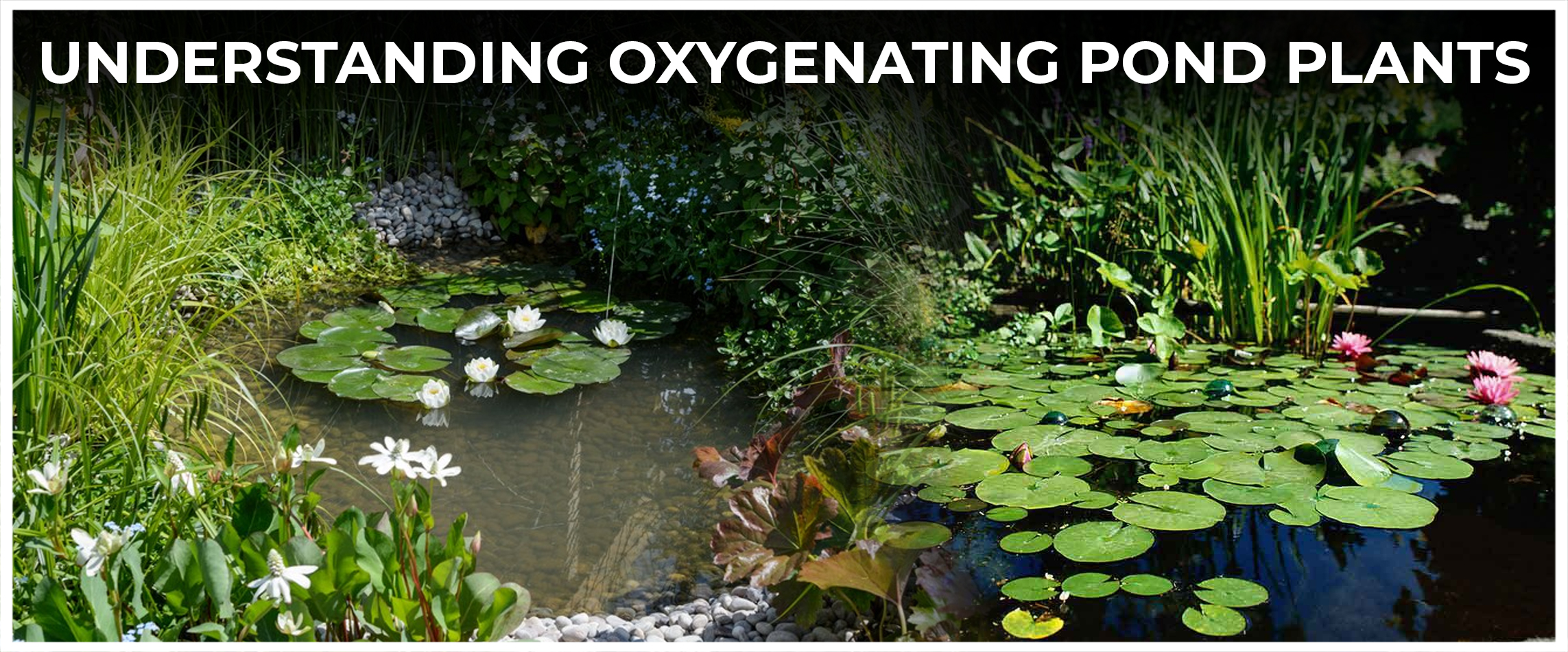
Understanding Oxygenating Pond Plants
Oxygenating pond plants, commonly called pond oxygenators or aerating pond plants, do more than simply supply extra oxygen for your pond creatures; they are necessary for maintaining the overall balance of your pond ecosystem.
These plants play an important role in the carbon cycle, since they oxidize CO2 at daytime through photosynthesis, which helps to oxygenate the water and create conditions for thriving of fish, wildlife, and beneficial bacteria.
What Is The Purpose Of Pond Oxygenating Plants?
All plants produce oxygen, but pond plants that oxygenate take it one step further. These aquatic plants not only produce oxygen but also remove carbon dioxide from the pond, preventing it from becoming stagnant.
Furthermore, these special plants can remove the excess nutrients from the pond, which makes the water healthier for all the fish and other aquatic creatures.
They act as a vital part of the ecosystem as they keep the balance of the algae population at a constant level.

Why Do We Need Oxygenating Pond Plants?
Water Filtration System
Water filtration helps remove impurities from water to make it safe. Oxygenating pond plants, along with the pump and filter, remove extra nutrients, like nitrates, from the pond.
By taking in extra nutrients, the oxygenator for pond helps stop too much algae from growing, which makes it easier for the filtration system to work.
This teamwork makes the pond look better by getting rid of ugly algae and helps the plants and animals grow well. Less algae means more transparent water and better quality. This allows fish and other water animals to live well and keeps the pond healthy.
Oxygen Plants For Ponds
Plants that produce oxygen are essential for keeping the pond healthy. They give oxygen to the water, which is necessary for all the creatures that live in the pond.
Oxygen is vital for ponds. It helps fish, wildlife, and good bacteria stay healthy and strong.
Oxygenating pond plants help underwater animals work and survive. They also help keep the whole underwater environment balanced and nutritious.
Moreover, having enough oxygen in the water is better for the fish and plants in the pond. It helps prevent problems like oxygen levels getting too low and ecological issues.
Pond Decoration
Oxygenating pond plants help keep the water clean and make the pond look mesmerizing. They also add a lovely mix of colors, textures, and shapes, making the underwater view more interesting.
These plants make the pond look beautiful and peaceful, bringing a sense of calm and balance to the area.
In addition, pond plants look nice and have practical benefits, especially in the hot summer. These plants’ thick leaves provide shade and an excellent place for fish and other water animals to relax away from the hot sun.
This shade helps protect small water animals from too much heat and prevents algae from growing.
Pond plants give shade that keeps the water temperature right and prevents algae from growing too fast. This helps to keep the water clean and the environment balanced.
Basically, oxygenating pond plants are essential for making the pond look nice, and they also have a practical purpose. They help to make the pond area more beautiful and lively.
Seasonal Considerations
One might wonder how many oxygenating plants for my pond and how to oxygenate a pond. Different seasons can affect how much oxygen the pond plants produce. It’s a good idea to choose a variety of pond plants.
This way, they can work together all year. When it’s hot, some plants grow faster and make more oxygen.
During cold times, some plants continue to produce oxygen even though their growth slows down. By planting a variety of these plants, one can ensure that the pond always has plenty of oxygen for the fish and other creatures that live in it.
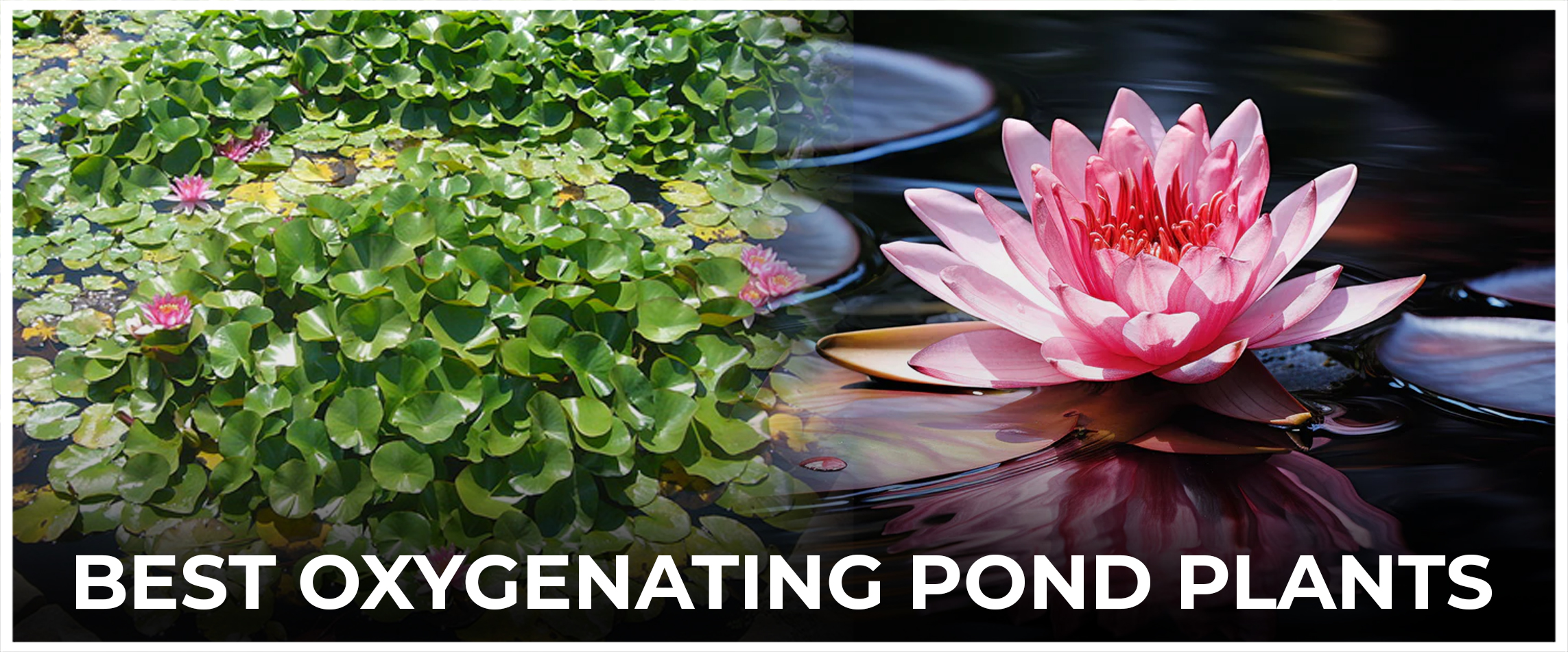
Best Oxygenating Pond Plants
Water Violets
One of the most beloved pond oxygenators out there, water violets are charming plants brightening the pond with beautiful flowers starting from May up until the early summer.
Not only do the pretty blooms enhance beauty of the water As well, but they also foster the health of the aquarium as a whole.
The best time to plant oxygen plants for ponds like water violets is when one locates them in shallow parts, making them adjust to their new environment and letting their root systems be established.
As they grow old, the plants can be transferred to areas of deeper ponds, where they can play their vital role.
Water Weed
Water weed is a popular choice for pond oxygenator plants because it grows fast and helps control algae.
This plant is great for beginners who are new to pond gardening because it can adapt easily and doesn’t need much maintenance.
Water weed grows quickly and easily in ponds, and can live in many different water conditions. It grows fast and covers the water quickly.
It also beats the algae to get the nutrients it needs, which stops the algae from growing too much. Water weed helps to keep the water clear and balanced in a pond.
Hornwort
Hornwort is a pond plant originally from the UK that is well-known for growing underwater and being able to adapt to different seasons. It’s a good pond oxygenator. Thriving underwater, this plant helps ponds stay healthy and full of life.
In late spring and summer, hornwort grows quickly with lots of loose leaves that spread through the water.
The clusters of needle-like leaves help to make lots of oxygen and also provide a safe place for water animals to live and lay their eggs.
Water Crowfoot
Another oxygenating pond plant is Water crowfoot is a pretty plant that helps keep the pond healthy and looks nice in the garden. Water Crowfoot has pretty white flowers that make the pond look more beautiful and lively.
Water Crowfoot flowers bloom from April to June, and they have pretty white flowers that float on the water.
These flowers are not only pretty to look at, but they also bring insects to the pond, which helps create a diverse ecosystem.
Apart from looking pretty, Water Crowfoot is important for keeping the pond’s environment in balance. These plants help the water by putting oxygen into it for the animals that live there to breathe.
This makes the water better for everyone. Also, their thick leaves give protection and breeding areas for fish and other water animals, making the pond habitat even more diverse.
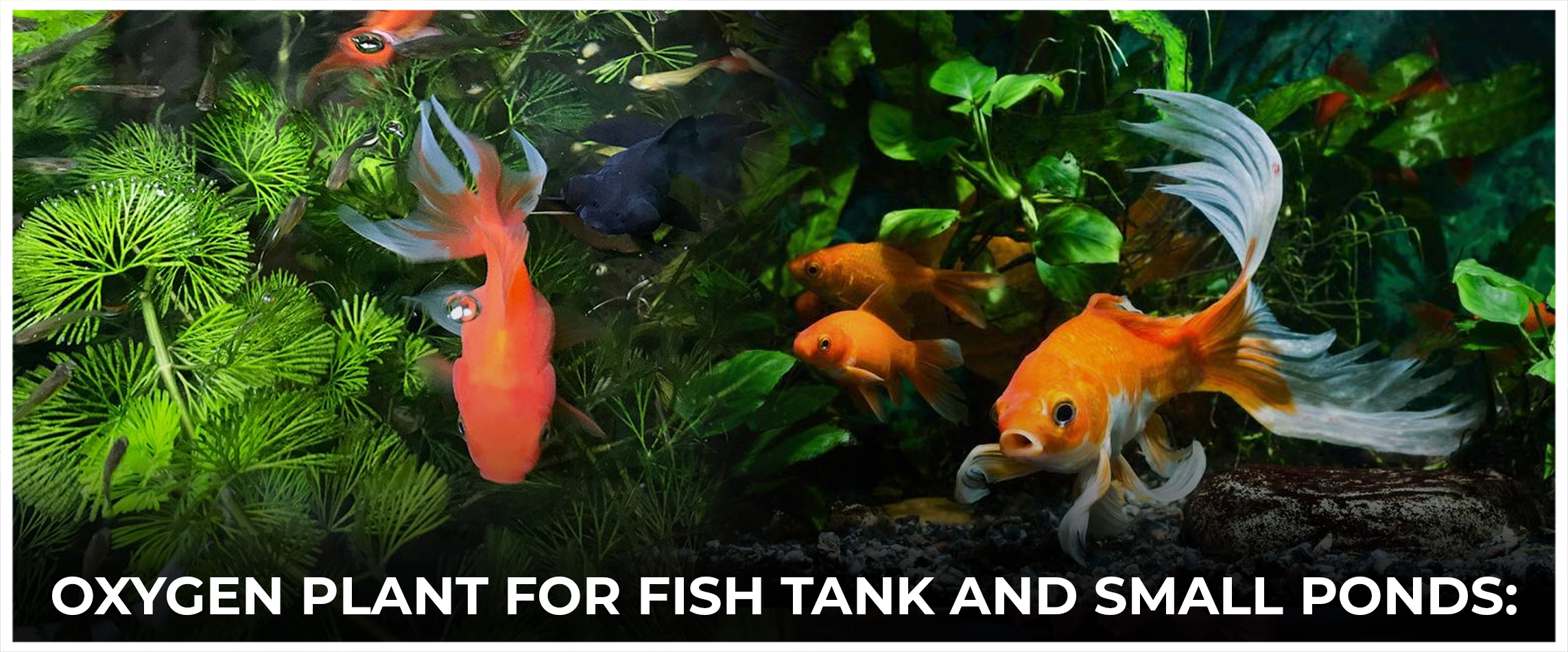
Oxygen Plant For Fish Tank and Small Ponds
The quality of the environment can be harmed in a relatively small fish tank wherein the oxygen levels can drop fast and be dangerous to the fish and other aquatic creatures.
These plants would present an environmentally pleasant means to counter this problem. Such plants, known as aquatic plants, or submerged vegetation, contribute to improving the appearance of the aquarium walls while simultaneously enriching oxygen through photosynthesis.
Common oxygen plant for fish tanks may be Anacharis, Hornwort and Java Moss. They are also capable of absorbing carbon dioxide and releasing oxygen, hence better water quality is ensured and creates a suitable environment for fish.
Moreover, probiotics could help prevent algae blooms from happening by beating other organisms for nutrients and making the water clearer and less unbalanced.
Water sprite, Waterweed, and Parrot’s Feathers rank among the most useful oxygenating plants for small ponds.
The ability to grow and reproduce quickly together with the survival skills, which allow them to adapt and thrive, is the main reason why they are suitable for maintaining the oxygen levels at an acceptable level.
Oxygen plants for fish tanks and oxygenating plants for small ponds are more or less similar in their purpose, scale of use, and specific needs.
However, both types of aquatic flora share a common goal: to provide for a healthy marine ecosystem such that fish and other aquatic creatures can abound.
Oxygenating Plants For Fish Tanks and Aquariums
Plants that provide oxygen are good for ponds, fish tanks, and aquariums.Oxygenating plants for aquariums like Anacharis, Java Moss, and Vallisneria are good for aquariums because they make oxygen, take away extra nutrients, and make a home for fish and other water animals.
How To Oxygenate A Pond?
It’s important to know what the plant needs to grow well. Some oxygenators are plants that live completely underwater, while others are floating oxygenating pond plants that sit on the surface of the pond without needing to be planted in soil or gravel.
Submerged Pond Plants Planting
Pond Plant Basket
In most cases, setting up a plant stand in the pond will require special pond baskets made specially for oxygenators.
These containers have enough space to accommodate the needs of various aquatic flora and act as a stable and comfort zone in which the Species can have an easy way to grow and develop.
While assembling the pond baskets, you must ensure to fill them up with a proper substrate, which could range between gravel and aquatic compost.
Nutrients are essential for plants, but in addition to this, adequate drainage and aeration have to be provided in order to sustain healthy root systems and nourish plant growth overall.
Ultimately, the selection between pebbles and water‐like compost comes down to the kind of plant species and the desired look.
Oxygenating Plants for Ponds
It is necessary to keep in mind that planting oxygenating plants in the pond should be done carefully because healthy predators and grazers are controlled by the health of the aquatic environment, which, in turn, affects the growth and development of aquatic plants.
It may be futile to add plants to an already unhealthy pond, as this action will only damage plants, which limits their capability to develop and, thus, disrupts the ecosystem balance.
If one prefers the pond’s water to be clear and free from suspended matter or debris, then clarity is what one should be aiming for since it could otherwise restrict growth in the plants.
Apart from this, water balance has a cardinal influence that covers factors like pH, nutrients, and dissolved oxygen abundance.
It makes sure that plants are getting the water levels that they need for their growth by providing access to the essential nutrients that are essential for their health and wellness.
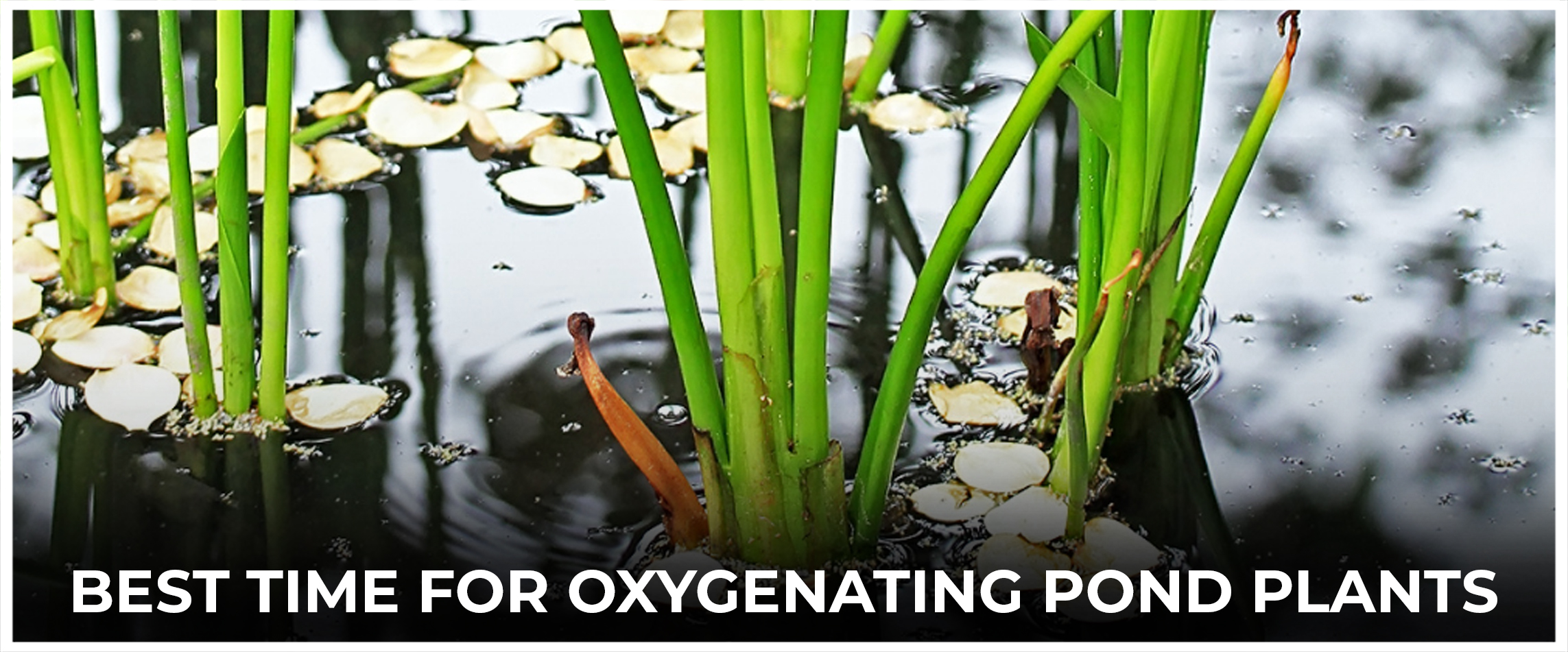
Best Time For Oxygenating Pond Plants
A proper choice of the right moment when one adds pond plants into the aquatic habitat will greatly increase the chance for a good establishment of the plants and their further development.
Carrying out comprehensive research before buying oxygenating pond plants to determine the best time for planting will be vital as you would want the plants to succeed after being transplanted to the new location.
In the majority of situations, spring and summer months usually turn out to be the timings for aquatic plants, matching up with the peak of the growing season.
In this period, warmer temperatures and more sunlight encourage root development and foliage expansion and engage plant growth and metabolism, providing perfect conditions for these processes.
Take advantage of this season to introduce the underwater pond plants to optimum chances for settling and adapting to their new environment.
Moreover, the special needs of the plant type one desires to invite must be considered. Other species may be adapted to particular growth cycles or have a stronger preference for certain times of the year, so planting will take place at different times.
To plant species that will thrive in the pond, one can get information from reliable sources and consult nursery professionals. This will help one make informed decisions about which planting times are ideal for the underwater pond plants based on the pond ecology.
How to Oxygenate a Pond Quickly?
If people wonder how to oxygenate a pond quickly to add more oxygen, one can put in a lot of oxygenating plants or use aerating pond plants or fountains.
These can help make more oxygen in the water, especially when there’s not enough or when there’s too much algae.
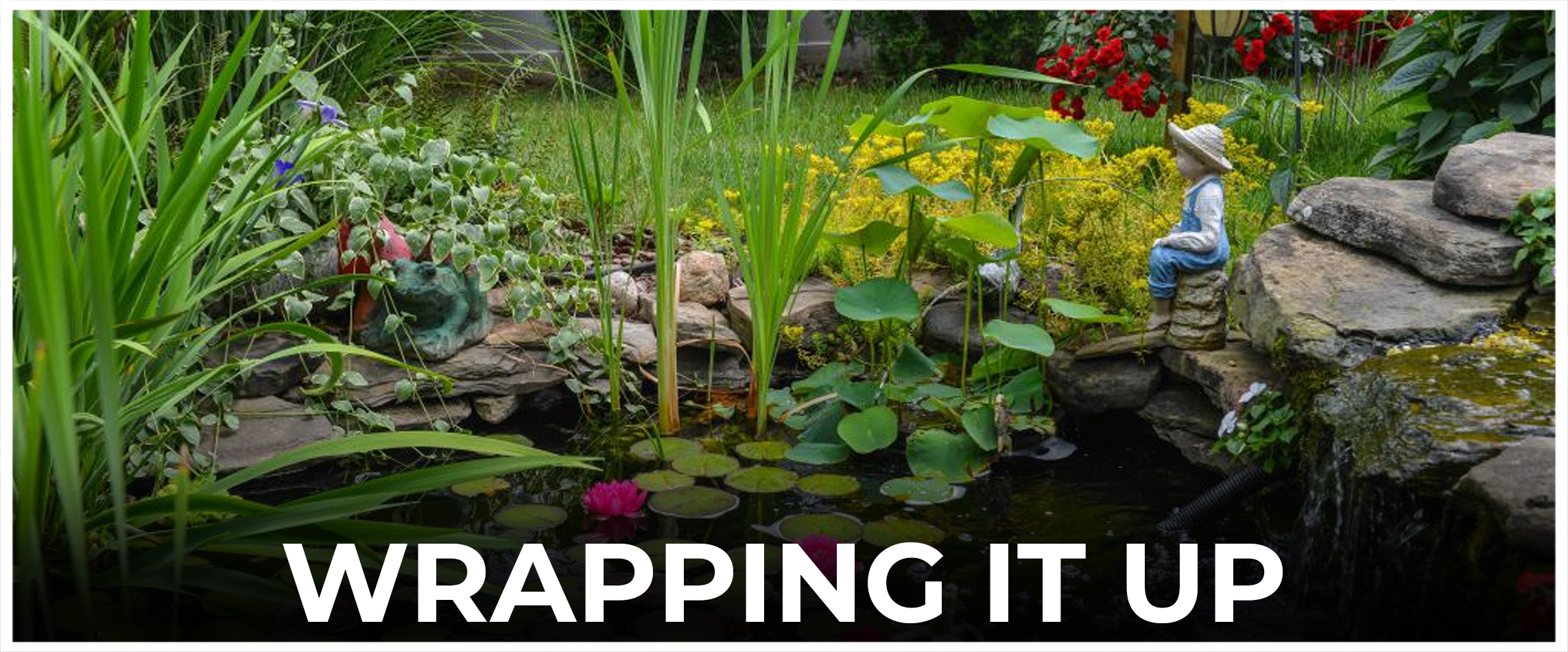
Wrapping it Up
Adding oxygenating pond plants to the pond is not only fun but also ensures the proliferation of a healthy and flourishing aquatic ambiance.
Oxygenation of water is not only key to having a healthy pond but also in the creation of a balanced and productive ecosystem.
By knowing how many oxygenating plants the pond requires and choosing the best varieties for the specific situation,one will be able to build a productive and healthy pond.
Be it your expertise in pond management or just new to it, oxygenating pond plants are the simplest and the effective way to having a quality water system and a secure environment for aquatic life.
So why wait? Explore the planet of oxygenating pond plants and get to know nature in the backyard with full observation.

